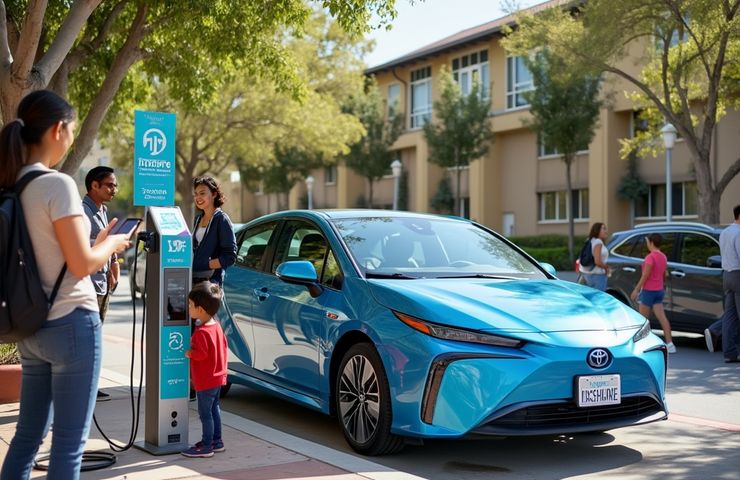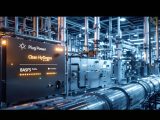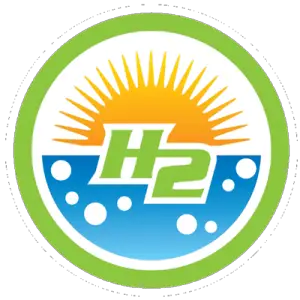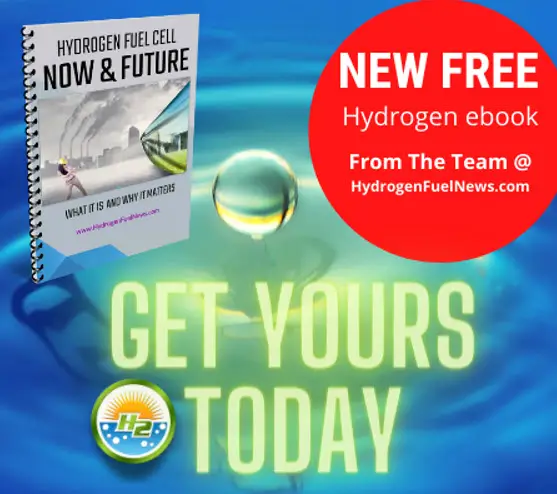
Hydrogen Fuel Cells Hit the Streets: UC Riverside Launches Nation’s First Hydrogen Carshare
May 7, 2025Hydrogen fuel cells are no longer just a pipe dream—they’re officially hitting the streets of Riverside. And we’re not talking about some high-tech pilot hidden in a lab. These are real cars, for real people, doing real commutes, right now. In May 2025, the University of California, Riverside (UCR), in collaboration with the California Air Resources Board (CARB) and Mobility Development Operations (MDO), launched the Riverside Clean Air Carshare (RCAC)—the first-ever hydrogen-powered carshare program in the U.S., and maybe even the world.
A First That’s Actually Changing Lives
Let’s be clear—this isn’t just a flashy tech stunt built for buzz. RCAC is about making a real dent in transportation equity, proving that fuel cell electric vehicles (FCEVs) can actually serve everyday folks, especially in places like Riverside—where smog still clings to the horizon and public transit options are hit or miss. With 13 Toyota Mirai FCEVs stationed across the city, this is a tangible step toward bringing zero-emission technology to communities that need it most.
The program runs on MDO’s easy-to-use digital carshare app, and here’s the kicker: it only costs $6 an hour. That kind of pricing puts clean, cutting-edge transportation within reach for low-income residents—something that’s rarely been done anywhere in the U.S.
Under the Hood: The Real Deal
These aren’t science-fair vehicles—they’re powered by the third-gen Toyota Mirai, which pushes out 182 horsepower and can cruise for up to 402 miles on a full tank of hydrogen. Instead of spewing out CO₂, the only thing you’ll see coming from the tailpipe is good old water vapor. Not bad, right?
Of course, hydrogen infrastructure is still a work in progress, especially in inland cities like Riverside. So UCR and partners came up with a smart workaround: centralized refueling for the whole fleet. It’s not just efficient—it’s also a pilot for future hydrogen logistics models imagined in California’s expanding Hydrogen Hub strategy.
Where Research Hits the Road
Think of the city as one big science lab on wheels. UCR’s Center for Environmental Research & Technology (CE-CERT) is digging into the data, tracking 23 separate sustainability metrics, from avoided CO₂ emissions to how, when, and by whom the vehicles are being used.
The numbers could add up to something big—like cutting around 85 tons of CO₂ from local air every year. But maybe more importantly, this effort is delivering real-world data that has been sorely missing in past hydrogen pilot programs—from Berlin to Hawaii. That info is going to be key in figuring out what works and what doesn’t.
California’s Big Hydrogen Bet in Action
RCAC isn’t just a local project; it’s a piece of California’s wider strategy to hit its clean transportation goals. With policies like the Advanced Clean Fleets Regulation and a target of carbon neutrality by 2045, the state is pulling out all the stops. Backing RCAC with $1.5 million in public grants shows that CARB is serious about testing hydrogen-as-a-service in communities often skipped by private-sector innovation.
And that makes this more than a local story. The lessons learned here could influence how the feds spend $7 billion in Hydrogen Hub funding that’s rolling out across the country via the Department of Energy.
Why This Matters… Right Now
When most people hear “hydrogen,” they think big rigs or industry use. But RCAC makes the case for the everyday applications—grocery runs, school visits, job interviews. In a car-heavy city like Riverside, where logistics pollution and limited public transit are daily realities, an affordable clean car option could be a real game-changer.
It also comes at just the right time. With California moving full-steam ahead toward a 2035 ban on gas-powered vehicles, and more than a quarter of Riverside’s residents already behind the wheel of some kind of EV, solutions like car-sharing offer a lifeline to those who can’t afford new cars or don’t have chargers at home.
A Model That Just Might Work
If RCAC takes off—and early signs say it’s on the right track—it could become a blueprint for rolling out hydrogen mobility nationwide. Think compact fleets, shared fueling hubs, and research-backed strategies tailored to each community. It’s definitely not the same game as Tesla Superchargers or interstate EV corridors—and that’s kind of the point. Scaling sustainable energy often starts small, with local trust and smart trial runs—not headlines and horsepower.
As the folks at Mobility Development Operations might put it: “Sometimes the best way to move forward is with a clean, quiet ride to the grocery store.”
Final Thought
So, can hydrogen cars work? Absolutely. That’s not the big question anymore. The real challenge is: can we build the hydrogen infrastructure, policy support, and public trust to make them work exactly where they’re needed most?



 With over 15 years of reporting hydrogen news, we are your premier source for the latest updates and insights in hydrogen and renewable energy.
With over 15 years of reporting hydrogen news, we are your premier source for the latest updates and insights in hydrogen and renewable energy.
Why hydrogen fuel so expensive?
The government should lower the price
My daughter is 17 and purchased her first car and it’s the Toyota Mirai. It’s a very nice car drives very smooth. But gas kills. She uses it for school work and she’s graduating this year so she’s busy. And it sucks because she works her butt off and she has to pay $167.00 every 2 or 3 days because it runs out fast we live in San Bernardino and she has to drive 25 miles to get gas. It sucks because she now has to sell the car. But if there were more of these stations around with the blue or gray tier type of gas would be so much cooler. She can’t wait for another 5 or 10 years she needs it now. These stations to refill at. And not just the green ones that cost $29.99 to 36.99 a kilogram now that’s a lot for an every day person going to work and school. Why does it have to cost so much????
The actual price for Hydrogen production is around $9.00 per Kilogram, but you have to consider storage and transportation, the should hover around $20.00.
In Japan the price is $13.00 a Kilogram